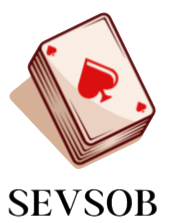Understanding how scatter distributions affect free spin triggers is vital for both developers and players in the gaming industry. Evaluating these factors helps optimize player engagement, fairness, and excitement in slot-based games. Scatter symbols determine the frequency and potential rewards of free spins, influencing overall game balance. By studying minimum counts and probability distributions, developers can enhance reward frequency without compromising challenge. This article explores how evaluating scatter patterns and counts can refine gameplay outcomes. It focuses on methods to analyze, adjust, and balance the mechanisms behind triggering free spins.
Understanding Scatter Symbol Dynamics
Scatter symbols are essential components that determine when free spins activate and how often players encounter them.
- Scatter symbols influence bonus rounds and determine engagement frequency in gaming experiences.
- Evaluating their placement helps identify how frequently players achieve special rounds.
- Developers use slot probability models to understand fair and balanced trigger patterns.
- Proper scatter positioning maintains excitement while avoiding overly frequent rewards.
- Adjusting scatter occurrences enhances fairness and supports player retention metrics.
Analyzing Minimum Counts for Activation
Determining the minimum number of scatter symbols required to activate free spins is a critical balancing factor in game design. Too few scatters make spins overly generous, while too many reduce excitement. Developers must evaluate statistical data to find a balance between reward frequency and challenge. This process ensures sustained user engagement while maintaining consistent payout levels across gaming sessions.

Impact of Scatter Distributions on Player Experience
The placement of scatter symbols directly affects how enjoyable and rewarding a slot game feels.
- Uniform scatter distribution provides predictable free spin opportunities for consistent gameplay.
- Randomized scatter patterns increase unpredictability and improve excitement during play.
- Weighted scatter locations create varying difficulty levels across different reels or grids.
- Optimized distribution ensures smooth progression and prevents player frustration.
- Balanced probability design maintains engagement without excessive payout frequency.
Techniques for Evaluating Scatter Efficiency
Game analysts use statistical modeling and simulation to study scatter symbol behaviors. These techniques help determine ideal symbol frequency and spacing. Adjusting probabilities ensures fair outcomes while keeping reward triggers exciting. Continuous evaluation allows designers to refine balance for both beginners and experienced players.
Optimizing Free Spin Trigger Mechanisms
Creating optimal free spin mechanics requires both mathematical precision and creative design. Scatter placement must be tested using extensive simulations to verify consistent fairness. Developers fine-tune symbol counts to align with overall reward strategies. Balanced scatter mechanics enhance excitement and maintain consistent user satisfaction throughout long-term play.
Evaluating scatter distributions and minimum counts for triggering free spins provides valuable insights into creating enjoyable and fair slot experiences. By assessing scatter frequency and symbol placement, developers ensure that bonus rounds appear at ideal intervals. Statistical modeling refines both probability and visual engagement without compromising fairness. Careful tuning of scatter counts maintains excitement, balancing random rewards with achievable goals. Through ongoing testing and analysis, gaming experiences become more dynamic, ensuring satisfaction for players and stable performance for operators. This thoughtful approach to scatter evaluation promotes fairness, enjoyment, and sustainability across evolving digital gaming platforms.
